Abortion as Art —
Yale undergraduate Aliza Shvarts'
senior art project has created a little bit of controversy. She has apparently created "a documentation of a nine-month process during which she artificially inseminated herself 'as often as possible' while periodically taking abortifacient drugs to induce miscarriages." That's just lovely. (Already posted by whoeverur in the
forum, but so bizarre it warrants being on the front page.)
Shvarts insists that her project was not designed for "shock value." Funny. I would have thought it was designed precisely for shock value.
She also says that "she was not concerned about any medical effects the forced miscarriages may have had on her body. The abortifacient drugs she took were legal and herbal, she said, and she did not feel the need to consult a doctor about her repeated miscarriages." I'm always puzzled about why people think that just because a drug is "herbal" it can't possibly be harmful.
The final display of the project will be like something out of a horror movie:
The display of Schvarts' project will feature a large cube suspended from the ceiling of a room in the gallery of Green Hall. Schvarts will wrap hundreds of feet of plastic sheeting around this cube; lined between layers of the sheeting will be the blood from Schvarts' self-induced miscarriages mixed with Vaseline in order to prevent the blood from drying and to extend the blood throughout the plastic sheeting. Schvarts will then project recorded videos onto the four sides of the cube. These videos, captured on a VHS camcorder, will show her experiencing miscarriages in her bathrooom tub, she said. Similar videos will be projected onto the walls of the room.
As word of Schvarts' project got around, Yale
hurriedly released a statement assuring everyone that it was all just "creative fiction":
“Ms. Shvarts is engaged in performance art. She stated to three senior Yale University officials today, including two deans, that she did not impregnate herself and that she did not induce any miscarriages,” a Yale spokeswoman, Helaine Klasky, said in a statement sent by e-mail to reporters. “The entire project is an art piece, a creative fiction designed to draw attention to the ambiguity surrounding form and function of a woman’s body.”
But according to a
follow-up report in the Yale Daily News, Sharvarts is still insisting that she really did what she initially claimed:
Shvarts reiterated Thursday that she repeatedly use a needleless syringe to insert semen into herself. At the end of her menstrual cycle, she took abortifacient herbs to induce bleeding, she said. She said she does not know whether or not she was ever pregnant. “No one can say with 100-percent certainty that anything in the piece did or did not happen,” Shvarts said, “because the nature of the piece is that it did not consist of certainties.”
My hunch is that Shvarts probably did conduct her bizarre project. But who can say for sure? Creating doubt seems to be the basic point of her project.
There's a long history of hoaxes and "art projects" involving reproduction, which is why I devoted an entire chapter to that subject in
Hippo Eats Dwarf. The two that remind me most of Shvarts' project are
Mary Toft, the woman who gave birth to rabbits, and
Chrissy Caviar, the performance artist who claimed she harvested the eggs from her body and sold them as food.

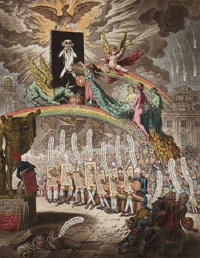 The Yale Center for British Art is hosting an exhibition about an obscure 18th-century art hoax (one that I had never heard of before). The exhibition is titled "Benjamin West and the Venetian Secret" -- which makes it sound a bit like a new Harry Potter novel. From Art Knowledge News:
The Yale Center for British Art is hosting an exhibition about an obscure 18th-century art hoax (one that I had never heard of before). The exhibition is titled "Benjamin West and the Venetian Secret" -- which makes it sound a bit like a new Harry Potter novel. From Art Knowledge News: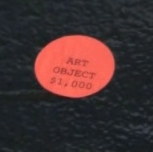 Small, round, orange stickers are appearing on objects all over downtown Appleton, Wisconsin. The stickers are stamped with the phrase "art object" and a price (ranging from one cent to $10,000). They're appearing on park benches, fire hydrants, store windows, etc. No one seems to know who's responsible for the stickers or what their purpose is. From the Appleton Post-Crescent:
Small, round, orange stickers are appearing on objects all over downtown Appleton, Wisconsin. The stickers are stamped with the phrase "art object" and a price (ranging from one cent to $10,000). They're appearing on park benches, fire hydrants, store windows, etc. No one seems to know who's responsible for the stickers or what their purpose is. From the Appleton Post-Crescent: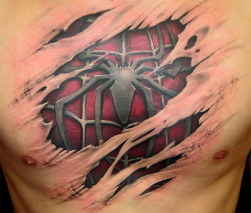
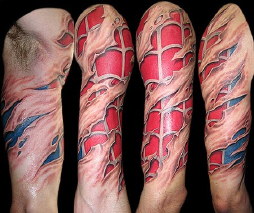
 Last week 28-year-old artist Yazmany Arboleda rented an empty storefront across the street from the New York Times building near Times Square to house his art exhibit. He then posted the title of the exhibit in the window: "The Assassination of Hillary Clinton / The Assassination of Barack Obama."
Last week 28-year-old artist Yazmany Arboleda rented an empty storefront across the street from the New York Times building near Times Square to house his art exhibit. He then posted the title of the exhibit in the window: "The Assassination of Hillary Clinton / The Assassination of Barack Obama." 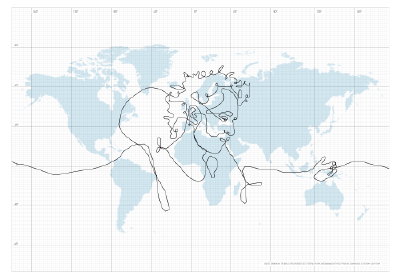
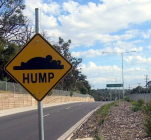

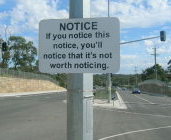
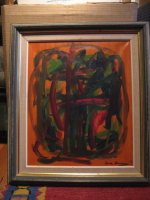 I received an email from Maria in Sweden who reports that when her mother recently passed away she became the owner of a painting by Pierre Brassau, the monkey artist. (See the article about Pierre Brassau in the hoaxipedia. To sum up the story: in 1964 a Swedish reporter placed some paintings drawn by a monkey in an art show, claiming they were the work of an avant-garde French artist, Pierre Brassau. After critics praised the paintings, he revealed the hoax.) Apparently Maria's mother had received the painting in 1970 as a gift and had kept it ever since.
I received an email from Maria in Sweden who reports that when her mother recently passed away she became the owner of a painting by Pierre Brassau, the monkey artist. (See the article about Pierre Brassau in the hoaxipedia. To sum up the story: in 1964 a Swedish reporter placed some paintings drawn by a monkey in an art show, claiming they were the work of an avant-garde French artist, Pierre Brassau. After critics praised the paintings, he revealed the hoax.) Apparently Maria's mother had received the painting in 1970 as a gift and had kept it ever since.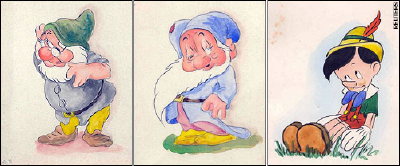
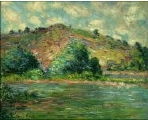 German museum discovers its Monet is a fake
German museum discovers its Monet is a fake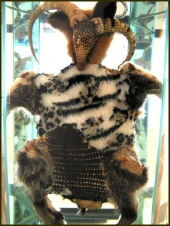 Nate Hill describes himself as a rogue taxidermist. He rummages through trash looking for dead animals: fish, dogs, cats, etc. Whatever he finds, he stitches together to form a bizarre new creature. From a recent AP article about him:
Nate Hill describes himself as a rogue taxidermist. He rummages through trash looking for dead animals: fish, dogs, cats, etc. Whatever he finds, he stitches together to form a bizarre new creature. From a recent AP article about him: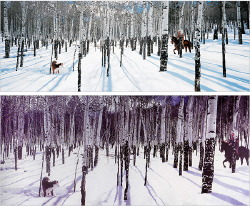 Cranky Media Guy sent me an interesting link to an article published last December in the New York Times about the artist Richard Prince. He's described as a pioneer of "appropriation art." What this means is that Prince takes photographs of other photographer's photographs, and then displays them as his own. For instance, he had an exhibit at the Guggenheim about cowboys, which basically consisted of photographs of Marlboro ads. The guy who actually took the images for the Marlboro ads, the photographer Jim Krantz, visited the exhibit and was like, "Hang on, those are my photographs!"
Cranky Media Guy sent me an interesting link to an article published last December in the New York Times about the artist Richard Prince. He's described as a pioneer of "appropriation art." What this means is that Prince takes photographs of other photographer's photographs, and then displays them as his own. For instance, he had an exhibit at the Guggenheim about cowboys, which basically consisted of photographs of Marlboro ads. The guy who actually took the images for the Marlboro ads, the photographer Jim Krantz, visited the exhibit and was like, "Hang on, those are my photographs!" Back in 2000 a graphic design magazine called Dot Dot Dot ran an article about a subversive artist from the 1950s called Ernst Bettler. Design Observer summarizes the article's central tale:
Back in 2000 a graphic design magazine called Dot Dot Dot ran an article about a subversive artist from the 1950s called Ernst Bettler. Design Observer summarizes the article's central tale: